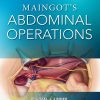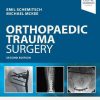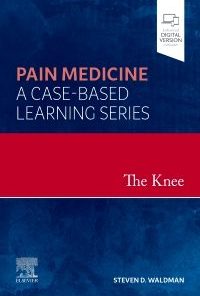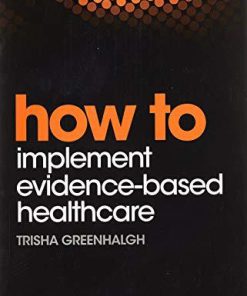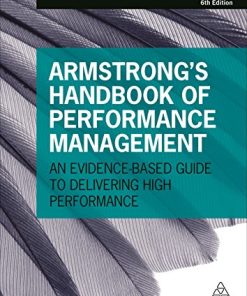(EBOOK PDF)Evidence Based Management of Complex Knee Injuries Restoring the Anatomy to Achieve Best Outcomes 1st edition by Robert LaPrade, Jorge Chahla 9780323713115 0323713114 full chapters
$50.00 Original price was: $50.00.$25.00Current price is: $25.00.
Evidence Based Management of Complex Knee Injuries Restoring the Anatomy to Achieve Best Outcomes 1st edition by Robert LaPrade, Jorge Chahla – Ebook PDF Instant Download/Delivery: 9780323713115, 0323713114
Full download Evidence Based Management of Complex Knee Injuries Restoring the Anatomy to Achieve Best Outcomes 1st edition after payment
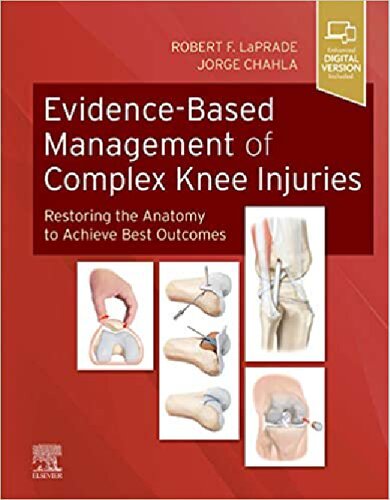
Product details:
• ISBN 10:0323713114
• ISBN 13:9780323713115
• Author:Robert LaPrade, Jorge Chahla
Evidence-Based Management of Complex Knee Injuries
Restoring the Anatomy to Achieve Best Outcomes
The ultimate resource for sports medicine conditions involving the knee, Evidence-Based Management of Complex Knee Injuries is an up-to-date reference that provides practical tools to examine, understand, and comprehensively treat sports medicine conditions in this challenging area. Using a sound logic of anatomy, biomechanics, lab testing, human testing, and outcomes analysis, editors Robert F. LaPrade and Jorge Chahla offer a single, comprehensive resource for evidence-based guidance on knee pathology. This unique title compiles the knowledge and expertise of world-renowned surgeons and is ideal for sports medicine surgeons, primary care physicians, and anyone who manages and treats patients with sports-related knee injuries.
Evidence Based Management of Complex Knee Injuries Restoring the Anatomy to Achieve Best Outcomes 1st Table of contents:
Preface
Dedication and Acknowledgments
1. Comprehensive Clinical Examination
Introduction
Clinical Examination Overview
Patellofemoral Joint
Tibiofemoral Joint
Meniscus and Cartilage Injuries
Functional Assessment
Summary
Section 1. Imaging of the Knee Joint
2. Plain Radiography of the Knee
Introduction
Radiographic Views of the Knee
Trauma
Pathological Conditions
Surgical Considerations
Summary
3. Magnetic Resonance Imaging of the Knee: Conventional and Novel Techniques
MRI Basics
Conventional MRI Techniques
Quantitative and Advanced MRI Techniques
Summary
4. Computed Tomography of the Knee Joint: Indications and Significance
Three-Dimensional Modelling and Printing in the Complex Knee
Computed Tomography in Trauma
Computed Tomography Assessment of Bone Healing and Union
Computed Tomography and Soft Tissue Injuries
Primary Anterior Cruciate Ligament Reconstruction
Revision Anterior Cruciate Ligament Reconstruction
Multiligament Knee Injury and Computed Tomography
Osteotomy and Computed Tomography
Patellofemoral Joint Disorders
Summary
5. Mechanical Malalignment of the Knee Joint: How and When to Address
Introduction
Normal Knee Alignment
Biomechanics of the Knee
Coronal Malalignment
Sagittal Malalignment
Clinical Assessment
Radiological Assessment
Choice of Realignment Procedures
Results
Summary
Section 2. Ligamentous Pathology
6. Anterior Cruciate Ligament
Anatomy
Biomechanics
Diagnosis
Summary
7. Posterior Cruciate Ligament
Introduction
Demographic Characteristics
Anatomy
Diagnosis
Treatment
Postoperative Care
Clinical Outcomes
Summary
8. Repair and Reconstruction of the Superficial Medial Collateral Ligament and the Posteromedial Corner
Introduction
Anatomy
Surgical Techniques
Future Directions
9. Posterolateral Corner of the Knee
Anatomy and Function
Biomechanics
Presentation of Injury
Physical Examination
Imaging
Classification
Nonoperative (Conservative) Treatment
Surgical Treatment Options
Outcomes
Conclusion
10. Anterolateral Ligament and the Anterolateral Corner
Introduction
Anatomy
Histology
Biomechanics
Diagnosis
Treatment Algorithm
Reconstruction Technique
Outcomes
Summary
11. Multiligament Knee Injuries
Introduction
Epidemiology and Injury Patterns
Diagnosis
Treatment
Summary
12. Arthroscopic Primary Repair of the Cruciate Ligaments
Introduction
Treatment Algorithm
Rehabilitation
Outcomes
Future Directions
Conclusions
Section 3. Meniscal Pathology
13. Meniscal Pathology: Meniscus Anatomy
Introduction
Gross Anatomy
Associated Ligaments
Vascular Anatomy
Summary
14. Meniscus Biomechanics
Introduction
Meniscus Kinematics
The Effects of Aging on the Menisci
Conclusion
15. Meniscal Tears: Meniscectomy Versus Repair
Introduction
The ‘Routine’ Meniscectomy
The Delayed Trend Towards Repair
Indications for Meniscal Repair
Common Tear Patterns
Meniscal Repair With Sutures: Techniques
Postoperative Rehabilitation Protocols
Meniscal Repair Enhancement
Failed Meniscal Repair
Summary
16. Meniscal Root Tears
Introduction
Anatomy
Biomechanics and Pathology
Diagnosis
Evaluation
Clinical Diagnosis
Treatment Algorithm
Conclusions
17. Meniscal Radial Tears
Introduction
Pathoanatomy and Biomechanics
Diagnosis
Surgical Treatment
Postoperative Management
Results
Summary
18. Meniscal Ramp Lesions
Introduction
Anatomy
Biomechanics
Diagnosis
Treatment Strategies
Summary
19. Meniscus Deficiency and Meniscal Transplants
Introduction
Patient Selection
Graft Preservation and Preparation
Surgical Technique
Concomitant Pathological Conditions
Outcomes
Conclusions
20. Synthetic Meniscal Substitutes
Introduction
Tissue Engineering and the Meniscus
3D-Printed Meniscus
Conclusions
Under Investigation
Summary
Section 4. Cartilage and Subchondral Bone Pathology
21. A Basic Science Understanding of Cartilage Repair and Its Clinical Application
The Osteochondral Unit and Biology of Cartilage Repair
Pathology and Repair
Basic Techniques of Osteochondral Grafting
22. Focal Chondral Injuries
Introduction
Microscopic Anatomy of Articular Cartilage
Diagnosis
Nonsurgical Management
Surgical Treatment Algorithm
Surgical Techniques
Rehabilitation
Clinical Outcomes
Summary
23. OCD Injuries in the Paediatric and Adult Population
Introduction
Epidemiology
Anatomy and Pathogenesis
Natural History
Patient History and Physical Findings
Imaging and Diagnostic Studies
Diagnosis and Classification
Nonoperative Management
Operative Management
Summary
24. How to Manage the Active Patient with Osteoarthritis:: Biological Approaches
Introduction
Indications
Platelet-Rich Plasma
Bone Marrow Aspirate Concentrate
Adipose-Derived Mesenchymal Stem Cells
Alternative Therapies
Orthopaedic Societal Statements on Orthobiologic Use for Osteoarthritis
Conclusion
25. Osteonecrosis of the Knee
Introduction
Spontaneous Osteonecrosis
Secondary Osteonecrosis
Postarthroscopic Osteonecrosis
Summary
Section 5. Patellofemoral Disorders
26. Patellofemoral Anatomy and Its Surgical Implications
Medial Patellofemoral Anatomy
Conclusions
27. Treatment Algorithm in Patellofemoral Disorders: ‘Le Menu à la Carte’
Patellofemoral Instability
Summary
28. Tibial Tuberosity Osteotomies
Introduction
Clinical, Imaging and Arthroscopic Evaluation
Tibial Tuberosity Osteotomy Biomechanical Effects
Tibial Tuberosity Osteotomy Indications
Indications of Anteromedialisation Tibial Tuberosity Osteotomy
Outcomes in Pathological Conditions of the Patellofemoral Cartilage
Indications of Medialisation Tibial Tubercle Osteotomy
Outcomes in Patellofemoral Instability
Anteromedialisation and Medialisation Tibial Tubercle Osteotomy Technique in Isolation
Indications of Distalisation Tibial Tuberosity Osteotomy
Outcomes in Patellofemoral Instability
Distalisation Tibial Tuberosity Osteotomy Technique in Isolation
Comments and Pearls on Other Tibial Tuberosity Transfer Procedures
Rehabilitation
Complications
Summary
29. Pathological Torsion of the Lower Limb
Intrinsic and Extrinsic Limb Factors
Abnormal Limb Torsion Is Not a New Concept
Physical Examination and Radiological Work-up for Torsion
Surgical Details
Surgical Steps and Tips for AO Proximal Femoral Rotational Osteotomy
Postoperative Rehabilitation
Results
Conclusions
30. Lateral Patellar Instability:: Diagnosis, Treatment Algorithm, Conservative Approaches, Surgical Techniques, Outcomes, Rehabilitation and Future Directions
Introduction
Diagnosis
Treatment
Rehabilitation
Outcomes
Future Directions and Summary
31. Medial Patellar Instability: Primary and Iatrogenic
Introduction
Evaluation
Imaging
Noniatrogenic Medial Patellar Dislocation
Iatrogenic Medial Patellar Dislocation
Treatment
Summary
32. Trochleoplasty
Introduction
Anatomy and Biomechanics of the Trochlea
Clinical Evaluation and Diagnosis
Imaging and Classification of Trochlear Dysplasia
Role of Trochlear Dysplasia in Recurrent Patellar Instability
Trochleoplasty Procedure
Clinical and Radiographic Outcome After Trochleoplasty
Summary
Section 6. Extensor Mechanism Disorders
33. Injuries of the Patellar Tendon
Pathological Conditions of the Patellar Tendon
Conclusions
34. Quadriceps Tendon Injuries
Epidemiology
Anatomy, Biomechanics and Pathogenesis
History and Physical Examination Findings
Imaging and Diagnostic Studies
Operative and Nonoperative Treatment
Postoperative Management
Clinical Outcomes
Summary
Acknowledgement
Section 7. Knee Arthrofibrosis
35. Knee Arthrofibrosis: How to Prevent and How to Treat
Introduction
Pathophysiology
Risk Factors
Prevention of Arthrofibrosis
Clinical Presentation
Nonsurgical Management
Surgical Treatment
Outcomes
Conclusion
Section 8. Paediatrics
36. The Paediatric Knee
Introduction
Growth-Related Considerations
Paediatric Knee Assessment
Anterior Cruciate Ligament Ruptures
Meniscal Injuries
Patellar Instability
Tibial Eminence Fractures
Section 9. Miscellaneous
37. Miscellaneous Complex Pathological Conditions of the Knee
Introduction
Lateral Patellar Facetectomy
Fabella Excision for Fabella Syndrome
Arthroscopic Notchplasty
Snapping Hamstring Syndrome
Proximal Tibiofibular Joint Instability
Patella Baja
Summary
Section 10. Perioperative Management
38. Intraoperative Management: Anaesthesia, Tourniquet, Tranexamic Acid, Blood Loss and Fluid Management
Introduction
Anaesthesia Considerations for Patients with Knee Injuries
Intraoperative Fluid Management
Management of Blood Loss During Complex Knee Surgery
Summary
39. Preparing the Surgical Team for a Quick and Efficient Procedure
Introduction
The Importance of Orthopaedic Surgical Team Teamwork and Efficiency
Defining the Orthopaedic Surgical Team
Characteristics of a Highly Functional Orthopaedic Surgical Team
General Orthopaedic Surgical Team Preparation: Day(s) Before Operating
General Orthopaedic Surgical Team Preparation: Day of Operation
Orthopaedic Surgical Team Preparation for Complex Knee Procedures
Multiligament Knee Reconstructions
Meniscus Repair Procedures
Orthopaedic Surgical Team Surgical Preparation for Complex Knee Procedures: Summary
40. Postoperative Management
Introduction
Patient and Family Education and Expectations
Pain Control
Thromboprophylaxis
Wound Care
Complications
Summary
41. Postoperative Rehabilitation Concepts
Introduction
Rehabilitation Phases
Return-to-Sport Testing and Decision Making
Summary
Index
People also search for Evidence Based Management of Complex Knee Injuries Restoring the Anatomy to Achieve Best Outcomes 1st:
evidence-based management of complex knee
evidence-based management of complex knee injuries pdf
evidence based management examples
what is evidence based management
evidence based management process
Tags:
Based Management,Complex Knee Injuries,Robert LaPrade, Jorge Chahla
You may also like…
Uncategorized
Uncategorized
The Evidence Based Practitioner Applying Research to Meet Client Needs 1st Edition, (Ebook PDF)
Uncategorized
Evidence Based Practice in Nursing & Healthcare: A Guide to Best Practice 4th Edition, (Ebook PDF)
Uncategorized
Evidence Based Practice in Nursing & Healthcare: A Guide to Best Practice 3rd Edition, (Ebook PDF)
Uncategorized
Uncategorized


